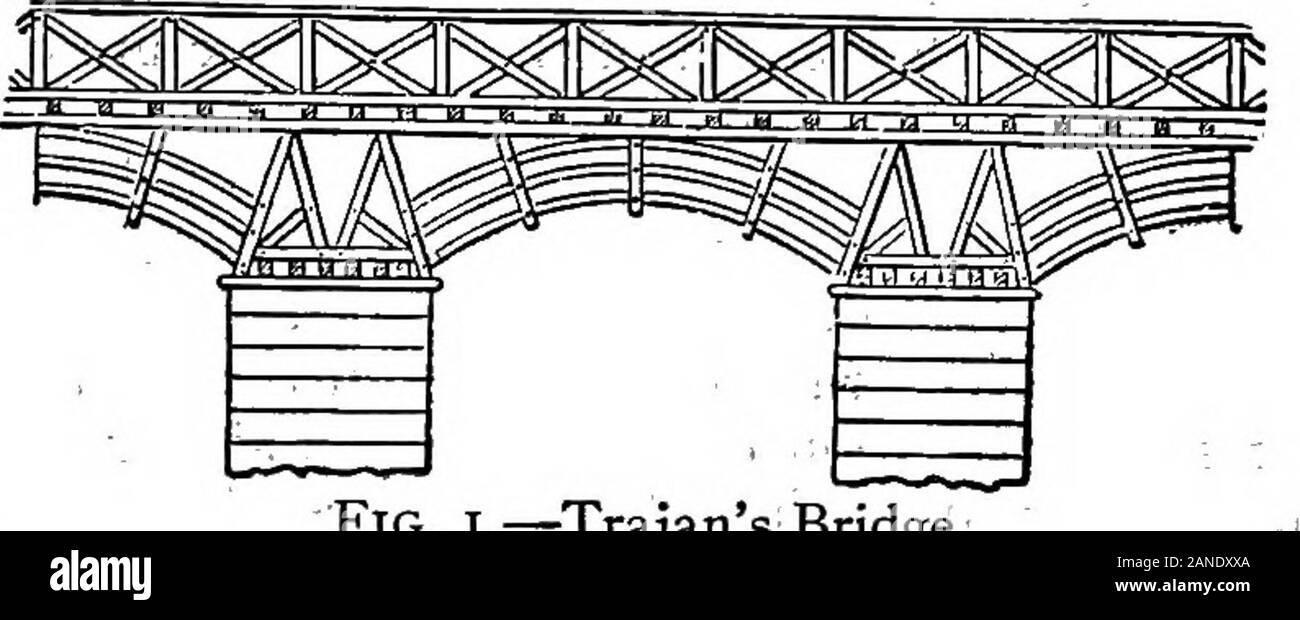The encyclopdia britannica; a dictionary of arts, sciences, literature and general information . onomy of weight.In a three-span bridge the theoretical advantage of continuityis about 49% for a dead load and i6% for a Uyeload., Theobjection to continuity is that very small alterations of levelof, thesupports due to settlement of the piers may very greatlyalter the distribution of stress, and render the bridge, unsafe.Hence ma&y multiple-span bridges such as the Hawkesbury,Benares an,d, .Chittrayatti bridges have been built with inde-pendent spans. , Lastly, some bridges are composed of canti

Image details
Contributor:
The Reading Room / Alamy Stock PhotoImage ID:
2ANDXXAFile size:
7.2 MB (281 KB Compressed download)Releases:
Model - no | Property - noDo I need a release?Dimensions:
2475 x 1010 px | 41.9 x 17.1 cm | 16.5 x 6.7 inches | 150dpiMore information:
This image is a public domain image, which means either that copyright has expired in the image or the copyright holder has waived their copyright. Alamy charges you a fee for access to the high resolution copy of the image.
This image could have imperfections as it’s either historical or reportage.
The encyclopdia britannica; a dictionary of arts, sciences, literature and general information . onomy of weight.In a three-span bridge the theoretical advantage of continuityis about 49% for a dead load and i6% for a Uyeload., Theobjection to continuity is that very small alterations of levelof, thesupports due to settlement of the piers may very greatlyalter the distribution of stress, and render the bridge, unsafe.Hence ma&y multiple-span bridges such as the Hawkesbury, Benares an, d, .Chittrayatti bridges have been built with inde-pendent spans. , _ Lastly, some bridges are composed of cantilevers and suspendedgirders., The main girder is then virtually a continuous girderhinged at the points of contrary flexure, so that no ambiguitycan arise as tQ the stresses, - Whatever .type of bridge is adopted, the engineer has, toascertain the loads to be. carried, and to. proportion the partsso that the stresses due to the loads do not exceed.Umits foundby experience to be safe.. In many .cpuntries the limits of workingstress in; public and railway bridges are prescribed by law. The. Fig. I.—Trajans ? Bridge, development of theory has advanced pari passu ydth the demandfor bridges of greater strength^ and span a.nd of more coraplexdesign, and there is now .little uncertainty. in calculating thestresses in any of the types of structure now adopted. In.themodern pietal bridge every member has a definite function andis subjected to a calculated straining action. Theory has beenthe guide in the deyelqpjaaent of bridge design, and its tru^t-worthiness is completely recognized. The inargin of uncertaintywhich must be rnet by empirical allowances on the .side of safetyhas been steadily diminished. , -_ ? The larger the. bridge, the more important is economy ofmaterial, not only, because the, total ejEpenditure is more serious, but because as the span increases the dead weight of the structurebeeomes a greater.fraction of the whole load to be supported.In fact, as the span increase